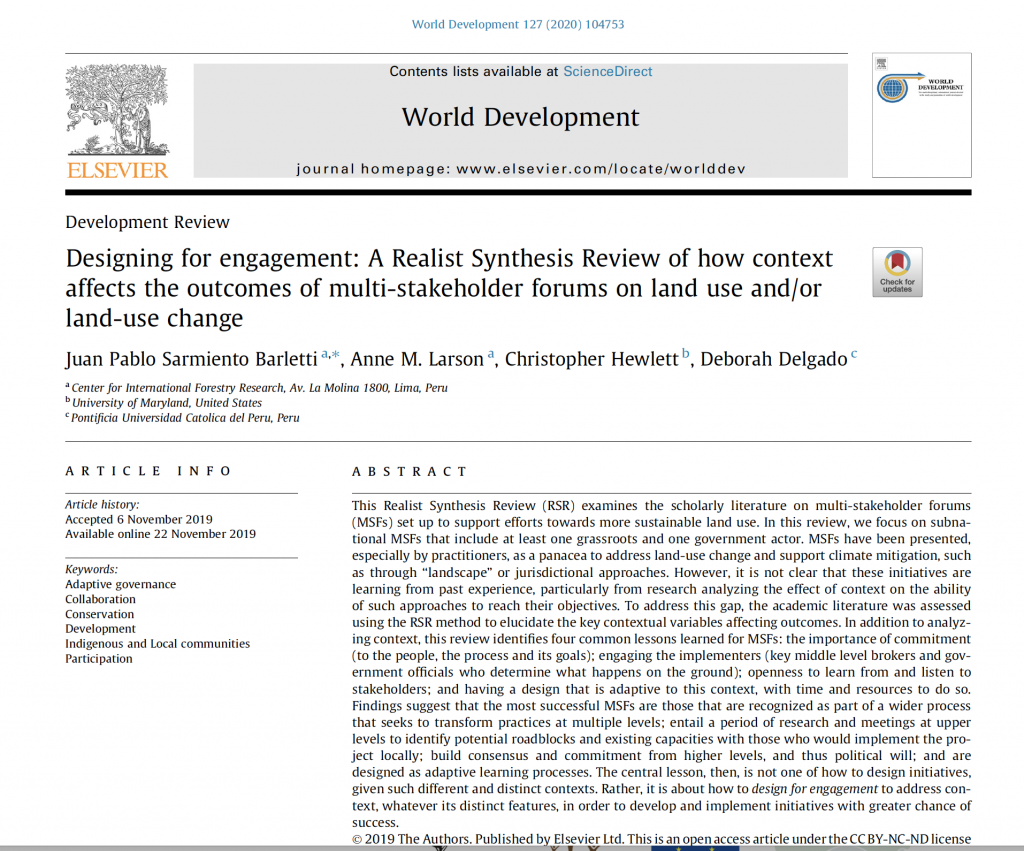This review, published by Elsevier, examines
- How MSFs were designed
- How they functioned and with what goals
- Their program theory (the strategy through which the organizers expected their intervention to create change)
- The different and often crosscutting contextual factors that affected their outcomes.
As the abstract points out, it is based on the understanding that participatory mechanisms cannot be understood in a vacuum but rather require an in-depth awareness of the contexts they emerge from and operate in; as other scholars have found, participation has been constrained or enabled by a series of cross-cutting factors such as gender, geographies, class and/or caste and knowledge, among others.
This article will contribute not only to scholarship but also to practice, as it provides insights into how MSFs can be designed to engage with the contexts in which they are implemented.
– Juan Pablo Sarmiento Barletti, Anne M. Larson, Christopher Hewlett, Deborah Delgado

This review was originally published by Elsevier Ltd as an open access article under the CC BY-NC-ND license.



